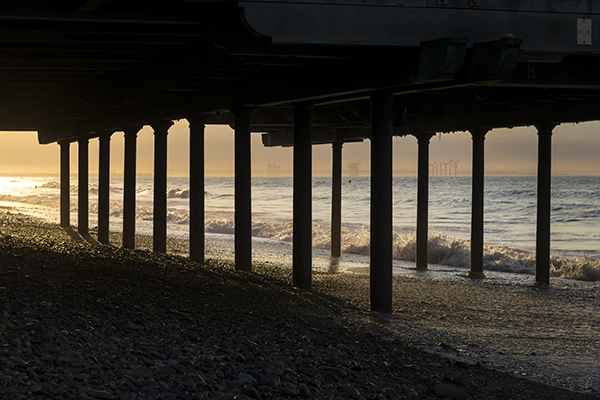Centred on a striking digital map and employing crowd-sourcing technology, Places of Poetry will use poetry to focus on the relation between heritage, place and identity. This creative arts project is open to writers and readers of all backgrounds across England and Wales, and we want to hear from potential contributors, partners and cultural organisations.
The new poetry of place and heritage that the project produces will take its place in a long tradition. Four hundred years ago Michael Drayton had a vision, to capture all of the history and geography of England and Wales in a single poem. His sprawling epic of national description, Poly-Olbion, was published in two parts (1612, 1622), each accompanied by the iconic decorative county maps of William Hole. This work and its ambition have never lost their capacity to fascinate; but what would it mean to revive this vision in 2019? And while Drayton’s poem assumed the value of one writer’s perspective, how might a twenty-first-century project capture a multiplicity of views?
Places of Poetry is a response to these questions. Funded by the Arts and Humanities Research Council, the Heritage Lottery Fund and Arts Council England, we will revive Hole’s iconography, creating a single digital map of England and Wales and laying this over detailed data provided through a partnership with the Ordnance Survey. Users will be invited to write poems of place, heritage and identity – supported by a range of materials developed in association with The Poetry Society – and will then be invited to pin their poems to the map. While our focus will be on the generation of new poetry, the map will be prepopulated with some existing, out-of-copyright pieces, to support and stimulate writers.
Places of Poetry faces arts and heritage organisations, large and small. The project has thirteen heritage partners – from Caernarvon Castle to Ely Cathedral, from Stonehenge to Big Pit National Coal Museum, from The Oval to Byker Estate – at which events and activities will be staged over the summer of 2019. These partnerships will highlight different parts of England and Wales, and also different kinds of heritage. Each site will also host a professional poet-in-residence, who will write and engage with the public. In addition, a toolkit of materials will be developed for use by other organisations, including museums, libraries, schools and community groups. We’re interested to see how many creative ways such organisations find to connect with the project and produce poems for our map, and we will aim to link with them through our media and social media campaign.
The digital map will serve as a kind of cultural experiment. Where will people choose to post their poems? Some may focus on major heritage sites; others may be drawn to sites of local or even personal significance. What kinds of heritage matter to them, and how will they articulate these meanings? Some may be inspired by the ancient heritage of Stonehenge, while others may reflect rather on sites of cultural or sporting heritage. And we want to capture the multiplicitous persepectives of people in Britain today. What does a disused coal-mine mean to a former miner? What does a housing estate mean to its inhabitants, new and old? What does Stonehenge mean to a child of refugee origin?
The map will thus have an afterlife, recording the ways in which writers responded to the question of what place and heritage meant to them in the summer of 2019. Readers will be able to search by title and author as well as place, while a rating function will mean that the better pieces will become more visible. It may also serve as a foundation – or point of stimulus – for subsequent projects, either in England and Wales or further afield. We have not included Scotland or Northern Ireland in part because Drayton did not include them in Poly-Olbion, and in part to throw modern ideas about nationhood into historical relief. But this would be an easily adapted model, once it is in place.
For now, and through the spring, the project team’s focus is on building connections. A project like this will never succeed in isolation, so we want to connect with organisations that might benefit from what we have to offer, and as a result might help to bring poems to our map. In advance of a public launch at the end of May, we welcome comments, questions and suggestions so get in touch. We’re on social media – Twitter, facebook and instagram @placesofpoetry – while you can reach me at a.mcrae@exeter.ac.uk.
Related articles
-
Glasgow and Pittsburgh: cities of steel
Jamie Cooke
New partnership between two cities with a bright future.
-
Changing how we see heritage can help us build back better
Becca Antink
How the heritage sector is making a difference in local communities.
-
What does heritage mean to you?
Becca Antink
The RSA is working on how heritage can improve lives in local places. Here are our stories of what heritage means to us - what are yours?




Be the first to write a comment
Comments
Please login to post a comment or reply
Don't have an account? Click here to register.